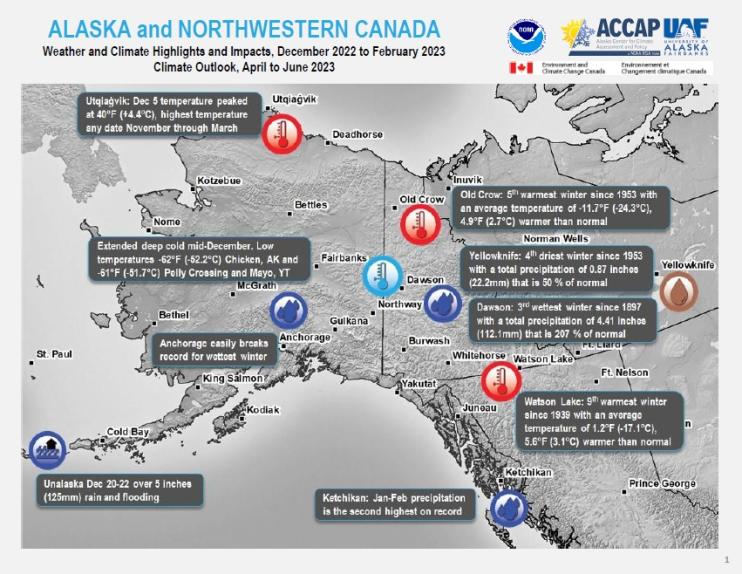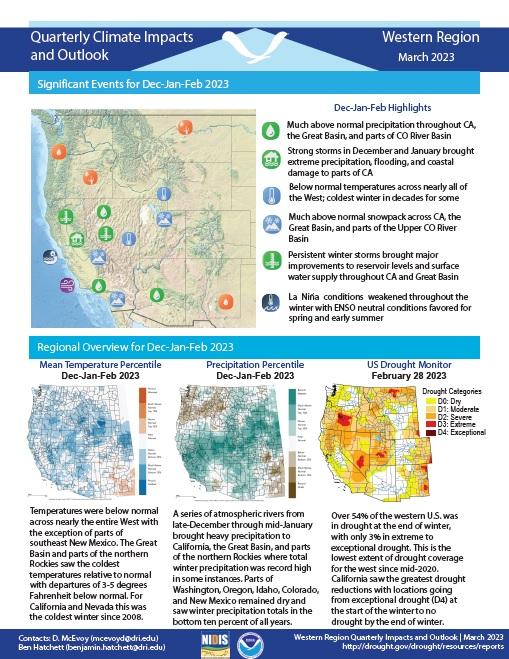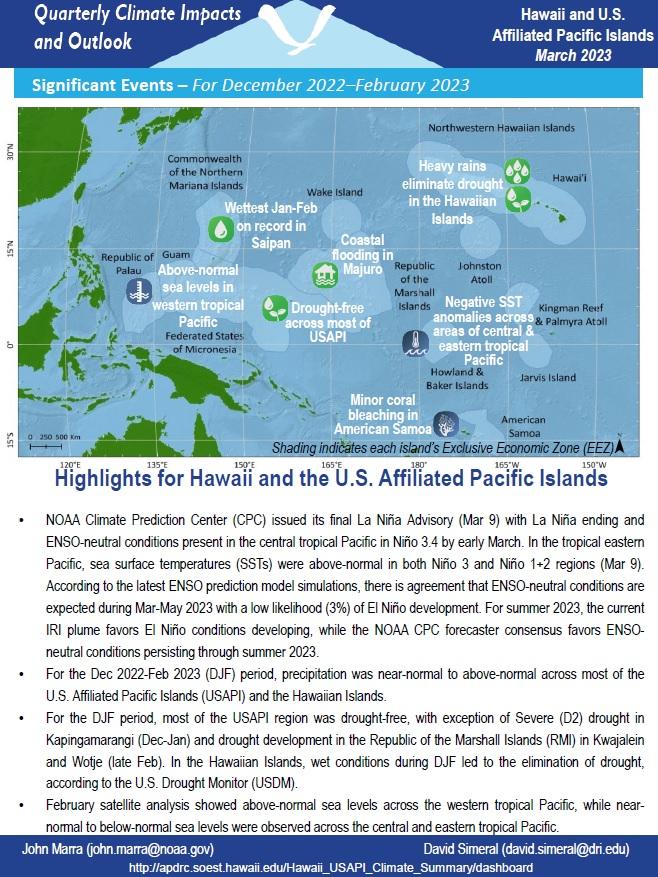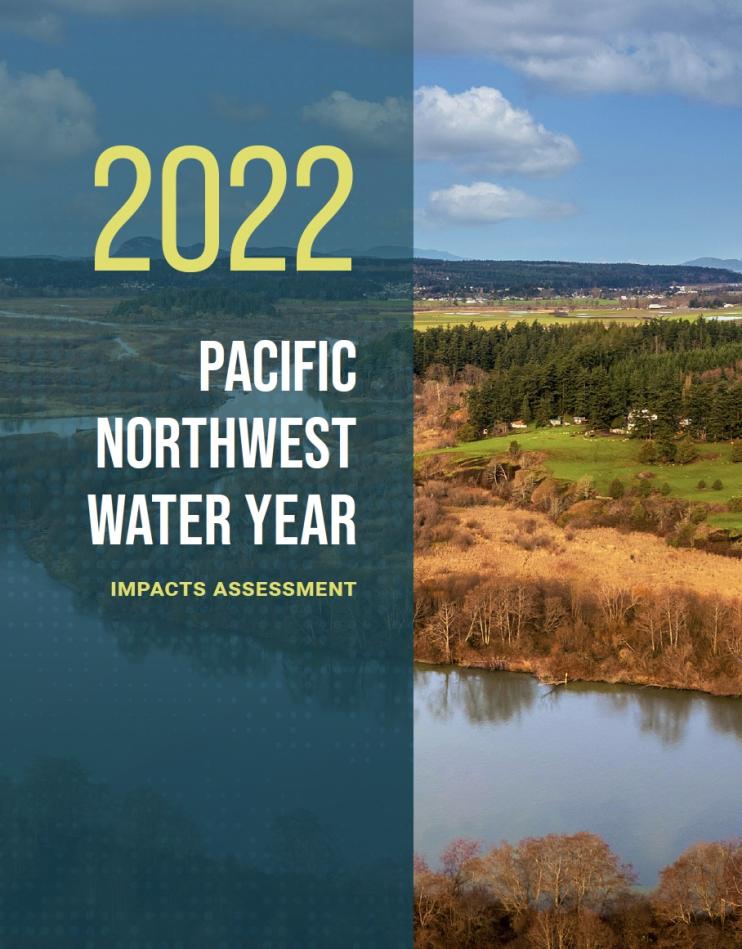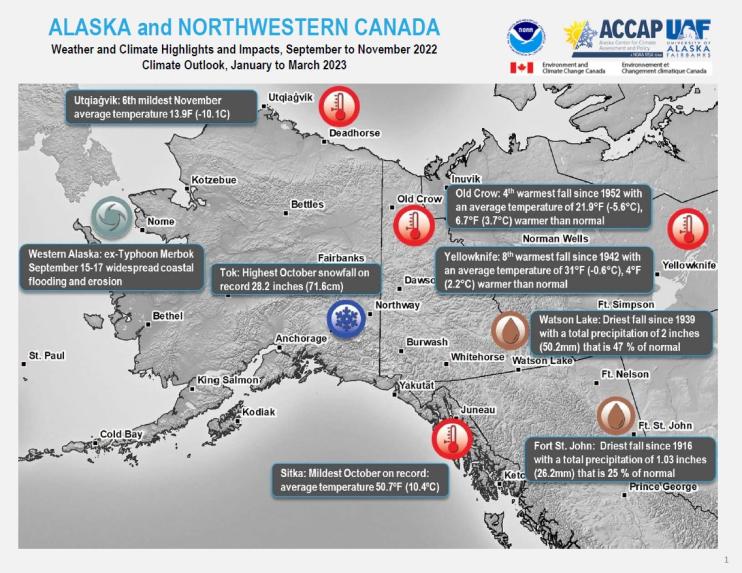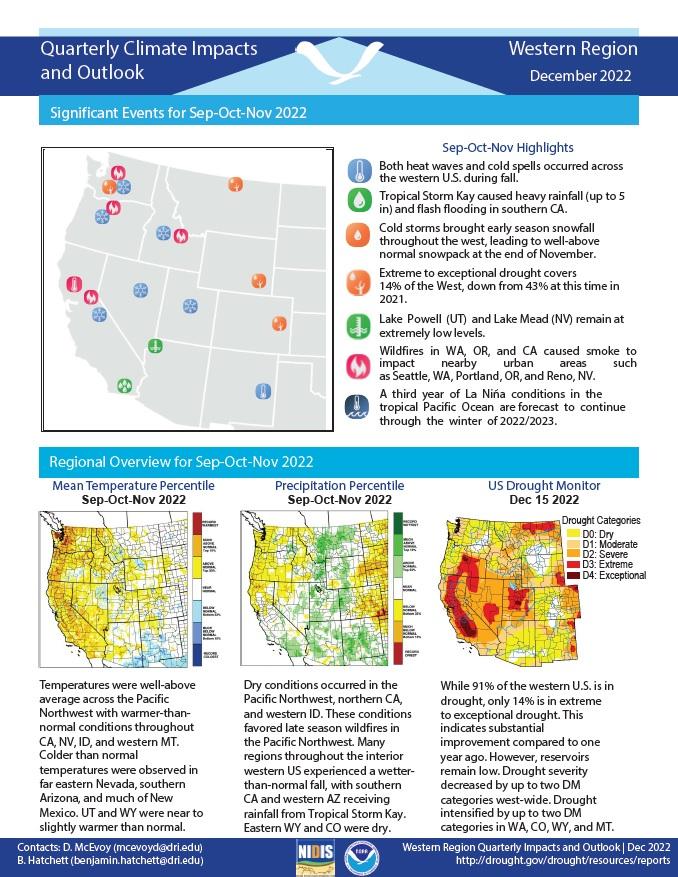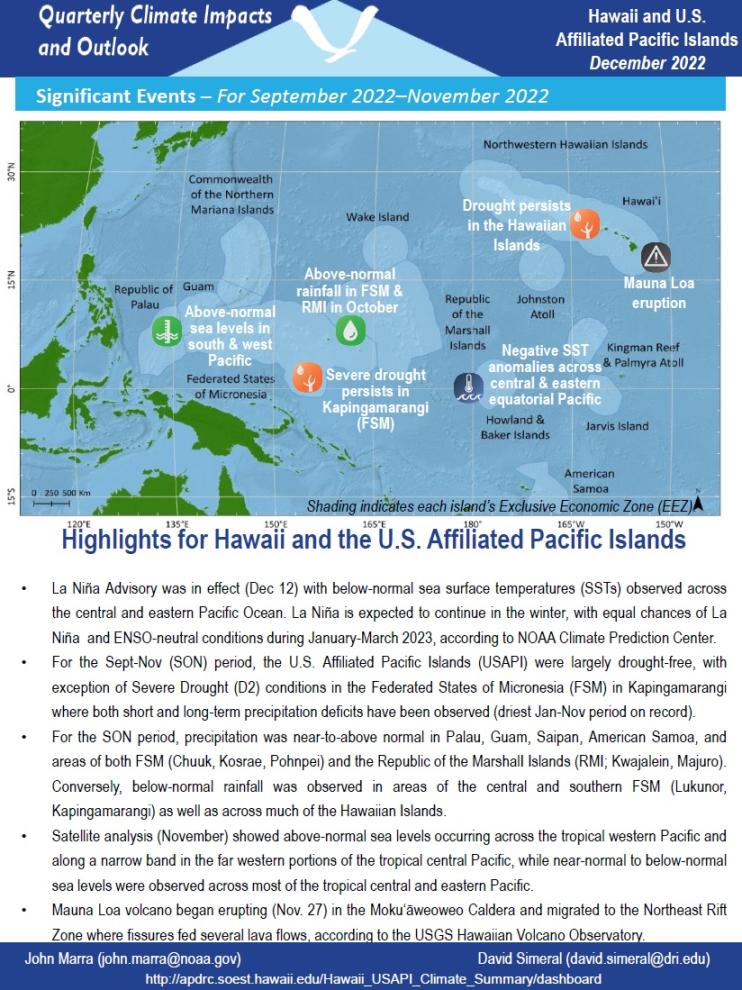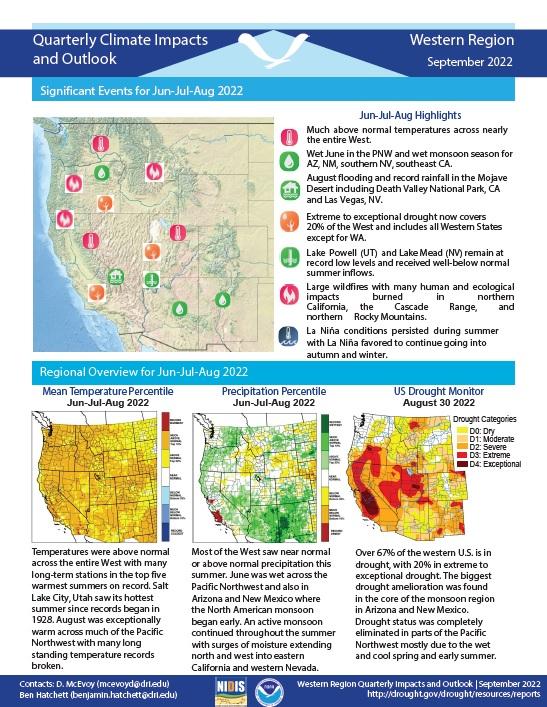Quarterly Climate Impacts and Outlook for Alaska and Northwestern Canada for December 2022–February 2023, with an outlook for April–June 2023. Dated March 2023.
NOAA’s Regional Climate Services Program and partners created these climate outlooks to inform the public about recent climate impacts within their respective regions. Each regional report contains easy-to-understand language, and anyone can access them through the Drought Portal.
Quarterly Climate Impacts and Outlook for the Western Region for December 2022–February 2023. Dated March 2023.
Temperatures were below normal across nearly the entire West with the exception of parts of southeast New Mexico. A series of atmospheric rivers from late December through mid-January brought heavy precipitation to California, the Great Basin, and parts of the northern Rockies where total winter precipitation was record high in some instances.
Quarterly Climate Impacts and Outlook for the Pacific Region for December 2022–February 2023. Dated March 2023.
For the December–February period, precipitation was near-normal to above-normal across most of the U.S. Affiliated Pacific Islands (USAPI) and the Hawaiian Islands.
The purpose of the 2022 Pacific Northwest Water Year Impacts Assessment is to summarize the water year conditions and sector impacts as a resource for future management of drought and other climate extremes.
Quarterly Climate Impacts and Outlook for Alaska and Northwestern Canada for September–November 2022, with an outlook for January–March 2023. Dated December 2022.
October is the heart of Fall for Southeast Alaska—typically cool and very wet, but October 2022 didn’t feel very fall-like for most areas. In fact, October was the warmest on record for a number of locations and within the top five warmest for many other places.
Quarterly Climate Impacts and Outlook for the Western Region for September–November 2022. Dated December 2022.
Quarterly Climate Impacts and Outlook for the Pacific Region for September–November 2022. Dated December 2022.
For the September–November period, precipitation was near-to-above normal in Palau, Guam, Saipan, American Samoa, and areas of both FSM (Chuuk, Kosrae, Pohnpei) and the Republic of the MarshalI Islands (RMI; Kwajalein, Majuro). Conversely, below-normal rainfall was observed in areas of the central and southern FSM (Lukunor, Kapingamarangi) as well as across much of the Hawaiian Islands.
Quarterly Climate Impacts and Outlook for Alaska and Northwestern Canada for June–August 2022, with an outlook for October–December 2022. Dated September 2022.
The early part of the summer saw record dry conditions that led to numerous and extensive wildfires. The second half of the summer saw excessive rainfall in many parts of the state. Most Yukon watersheds saw record snowpack in this past winter. This was followed by a colder than average spring, which signaled increased potential for flooding during the spring snowmelt season.
Quarterly Climate Impacts and Outlook for the Western Region for June–August 2022. Dated September 2022.
Temperatures were above normal across the entire West with many long-term stations in the top five warmest summers on record. Most of the West saw near-normal or above-normal precipitation this summer.
Quarterly Climate Impacts and Outlook for the Pacific Region for June–August 2022. Dated September 2022.
For the June–August period, precipitation was above normal in Saipan, isolated areas of both FSM (Kosrae, Pohnpei) and the Republic of the MarshalI Islands (RMI) (Kwajalein), and in American Samoa. Conversely, below-normal rainfall was observed in Palau, Guam, western and southern FSM (Yap, Kapingamarangi), southern RMI (Majuro), and across much of the Hawaiian Islands.


